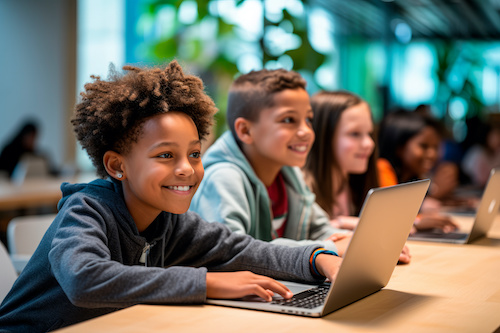Key points:
Technology has enhanced the opportunities for students to be creative and engage in school work that is meaningful and unique.
Why creativity?
Creativity is an essential skill for all students to have. Creative projects help students connect new information to prior knowledge through critical thinking and problem solving. Assignments that engage students in creative practices motivate hard-to reach students and provide an opportunity for all students to be successful.
Classrooms that include creative activities are those with students who are resilient and confident. Creativity pushes students to overcome challenges through productive struggle. This builds emotional development and lifelong skills that will help them in any future career they may have. Technology has made creative opportunities more accessible for teachers and students. With the use of technology, students are better able to apply their knowledge in different ways and be creative in their learning.
These are 5 ways you can use technology to promote creativity in your classroom:
- Engagement with AI: There are several AI tools like School AI and Magic School that students can use that will promote their creativity. These tools have spaces where students can ask questions to historical figures, participate in problem-solving simulations, and learn through hands-on exploring. Using the AI spaces provides students with an immersive experience that is powerful and engaging. These spaces create a virtual experience that results in a deeper understanding of the content through applied creativity.
- Collaboration on Google platforms: Using Google Sites like Google Classroom, Google Slides, Google Docs or Google Earth makes for easy sharing and collaboration on class projects. These sites can be used for all subjects and grade levels and are limitless in opportunities. Google tools can be used for
collaborative writing, assignment presentations, and implementing collaboration into assignments and daily routines helps build a sense of community in which students can work closely with one another, share ideas, and be creative in how they learn. All of the Google Workspaces have a wide variety of tools and resources for students to try out and implement into their work. Collaborating with Google will introduce them to new settings and content while being motivated and excited about their work. Working closely with peers allows them to think creatively. - Experimentation and risk taking through coding: Coding has a lot of real world applications and is very engaging for students. There are several sites that students can use like Code.org and Scratch. Coding can be used in a variety of ways. Students can make a creative writing piece come to life, students can code a math learning game, or even share what they have learned about a science or social studies topic like an animal’s environment. When slowly introduced, coding is a challenging and exciting way to create projects for any subject. There are hundreds of tools and settings that students can get creative with and explore independently that lead students through a trial and error process causing them to think creatively.
- Interactive lessons: There are several web tools like Nearpod and Peardeck that help bring your daily lessons to life. Implementing interactive lessons provides students with the opportunity to participate in open-ended questions, collaborate with their peers, and think creatively about the content they are learning. Moving away from the traditional classroom setting and allowing students to be creative in how they learn will be beneficial to them.
- Open-ended assessments using online applications: Technology has given us an unlimited amount of resources for enhancing teaching and learning. Students are now able to show their learning in more ways than they have ever
been able to before. There are many assessment platforms that encourage creative thinking from students in a way that works best for them. Students who are writers can publish on Book Creator or Storybird. For those who enjoy speaking can create a podcast using the Podcasts app. For students who love collaborating and creating presentations, resources including Canva and Padlet are great options. All of these modes for assessing allow students to be creative and apply their knowledge in different ways compared to a traditional assessment.


